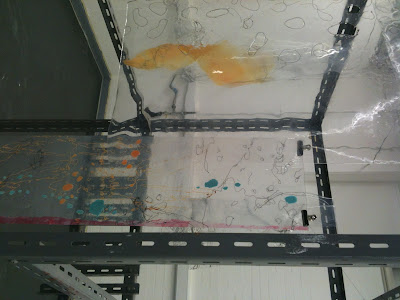Something that sticks in my mind from the Lost in Lace exhibition in Birmingham last year is the 'Touch and Feel' stations that were positioned next to every installation, inviting the viewer to experience the work on a further level.
Touching station for Michael Brennand-Woods work:
"Lace the Final Frontier"
As tangibility and tactility are driving forces within my work this term, I would like to encourage my
audience to touch and feel; creating sensory experience as well as a visual one.
I hope to that my final pieces appear intriguing, and entice the viewer to touch - however I understand that this is an impractical feature for the degree show:
a)
Because a lot of my work is made from water-soluble pva glue, it is easily damaged and may be worn away with constant touching
b)
As I plan to suspend my work, I do not want to promote the risk of it falling down, which may happen after constant moving and adjusting whilst the viewer is feeling
c)
I would not want to unintentionally encourage the audience to handle other student's works that are displayed in the exhibition
For these reasons I have begun to wonder if it would be beneficial to create my own touching and feeling station, so that my audience can experience the tactile quality of the work as it is intended, without fear of compromising my final samples. For this I will have to produce a collection of much smaller samples; indicating the same responses and aesthetics as my larger main pieces, that will be on some form of display for interactive purposes.









.JPG)
.JPG)
.JPG)
.JPG)
.JPG)
.JPG)
.JPG)


